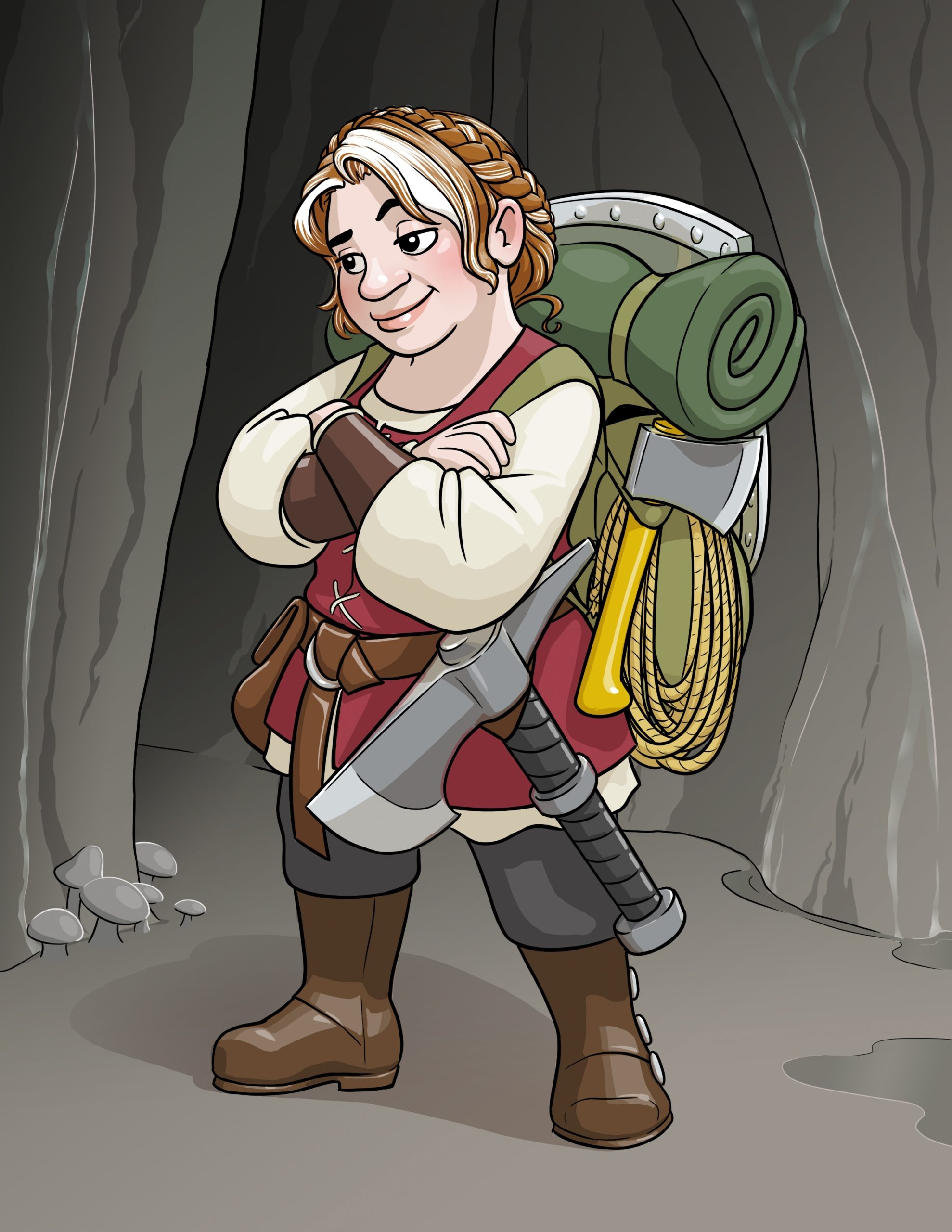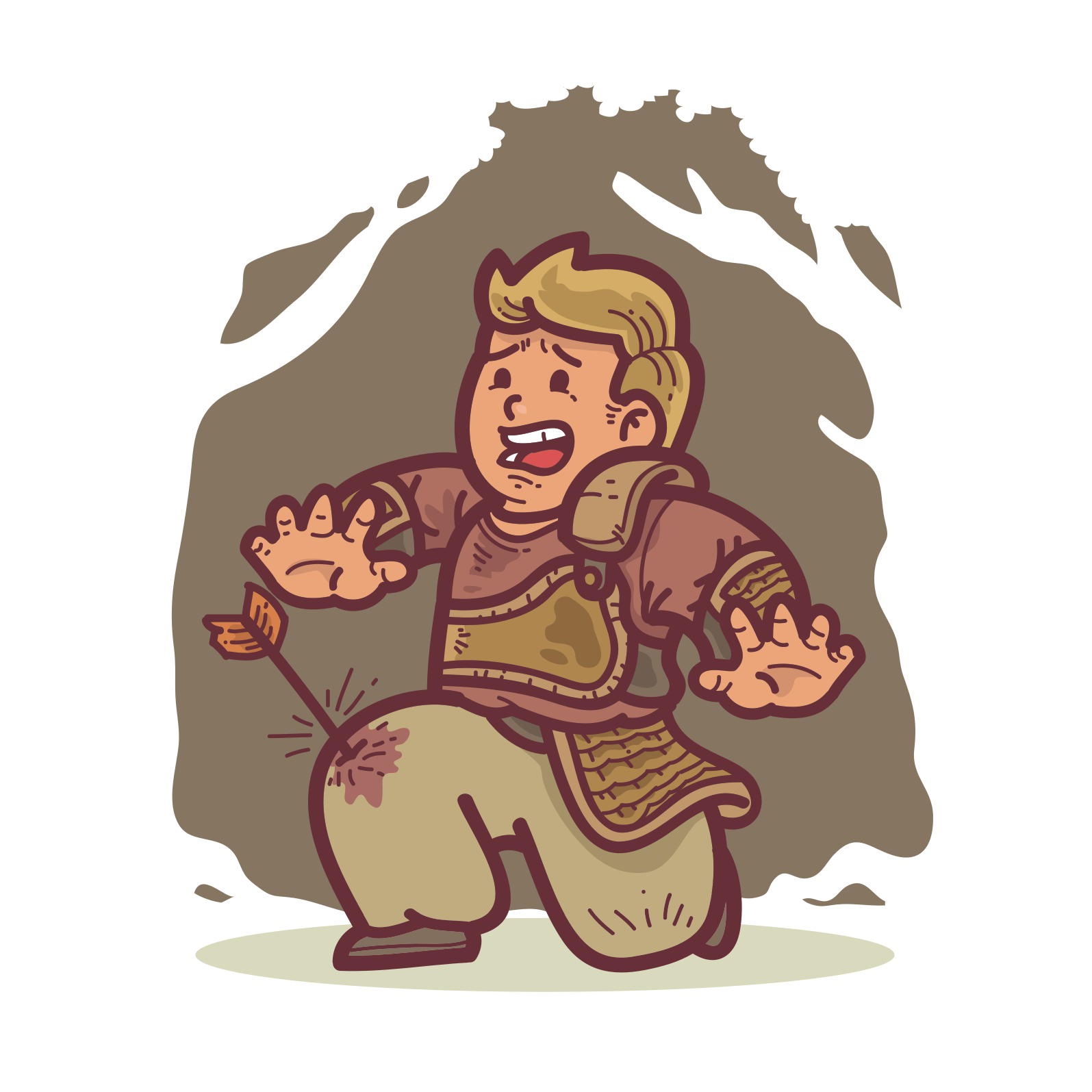
We will be playing 5e D&D rules, but within that ruleset there are many different optional rules that can be selected. In addition, trying to stay true to OSR concepts means we will put a few specific limitations in place.
Races
Original AD&D had only 7 character races available, so we will be sticking with those as the only options for characters in Dungeons Remastered.
They are:
Dwarf, Elf, Gnome, Half-elf, Halfling, Half-Orc, and Human.
The 5e versions of these races will be used.
Classes
The following classes from AD&D will be available:
Fighter, Paladin, Ranger, Cleric, Druid, Wizard, Illusionist, Thief, Assassin, Cavalier, Thief-Acrobat, and Barbarian.
5e doesn’t have specific rules for an Illusionist, Assassin, Thief-Acrobat or Cavalier as a specific class, but there are appropriate subclasses and/or feats & backgrounds to make close approximations.
The Bard class was introduced in the Strategic Review, Volume 2 #1 for AD&D. Unlike the Bard class today, players could not start as a Bard. Instead, they would need to multiclass as a 5th level thief and a 5th level fighter, then get druidic training. 2nd edition D&D introduced the Bard as a new class.
As such, we won’t be including bards as player classes from the get-go, but may consider introducing them later.
Monks were also included in 1st edition AD&D, but for balance/theme reasons they will not be included in Dungeons Remastered.
Encumbrance and Gear
In AD&D you had to be aware of encumbrance, how much food, arrows, torches, and other items you carried. In 5e D&D rules you’re technically supposed to do so as well, but most games just kind of ignore this. We’ll stick with the OSR style of this and track such things. It shouldn’t turn into a huge exercise in bookkeeping, but its an interesting character dilemma to deal with if you don’t have enough torches or other consumables to get through a full dungeon. Leaving the dungeon to go back to town and restock before returning was much more common in OSR style games than it is now.

Critical Hits
Crits were not a thing in AD&D first edition. And that’s a good thing. Because the life expectancy of PCs is already a bit limited. Letting the monsters land critical hits on players can be devastating.
1st edition AD&D Dungeon Masters Guide had this to say on the subject:
“Combat is a common pursuit in the vast majority of adventures, and the participants in the campaign deserve a chance to exercise intelligent choice during such confrontations. As hit points dwindle they can opt to break off the encounter and attempt to flee. With complex combat systems which stress so-called realism and feature hit location, special damage, and so on, either this option is severely limited or the rules are highly slanted towards favoring the player characters at the expense of their opponents. (Such rules as double damage and critical hits must cut both ways — in which case the life expectancy of player characters will be shortened considerably — or the monsters are being grossly misrepresented and unfairly treated by the system. I am certain you can think of many other such rules.)“
As such, in keeping with the spirit of OSR, we will not have any critical hit (or fumble) rules on a natural 20 or natural 1.
Healing
Healing in AD&D was primarily magical. Natural healing was limited to 1 HP per day, then after 30 days, 5 HP per day. Modern D&D allows you to be fully healed just by sleeping for 8 hours, which can make combat feel trivial.
To simulate a more OSR style healing, while still balancing with 5e rules, we’ll be playing using the “Healer’s Kit” and “Slow Natural Healing” rules from D&D 5e. Specifically:
Healer’s Kit Dependency.
A character can’t spend any Hit Dice after finishing a short rest until someone expends one use of a healer’s kit to bandage and treat the character’s wounds.
Slow Natural Healing.
Characters don’t regain hit points at the end of a long rest. Instead, a character can spend Hit Dice to heal at the end of a long rest, just as with a short rest.
So essentially, characters can heal at the end of a short or long rest by using a healing kit and spending/rolling unspent hit dice. Hit dice come back at the end of a long rest. Magical healing works as written in 5e.

XP and Levelling
In 1st edition AD&D, characters would not only gain XP from monsters, but also at the end of an adventure after dividing up gold pieces evenly with the party, they would get 1 XP for every GP. Later editions of D&D got rid of this GP ->XP conversion, but balanced it by reducing the amount of XP needed to advance in levels.
For our purposes in Dungeons Remastered, since we are playing 5th edition rules, and monster XP and character levels are balanced around that, we won’t be gaining XP for gaining gold. This also means that there will be less GP as rewards in the dungeons than there were when these modules were originally authored.
Adventure Progression
For some of the adventures we’ll be converting the original modules ourselves. Other times we’ll use the Goodman Games “Classic Adventures Reincarnated” series. In addition to these, Wizards of the Coast has published a few original adventures as purchasable supplements in 5e.
Here is the proposed play order. Some of these are fairly straightforward modules, others are extended dungeon crawls, almost mini-campaigns in and of themselves. The order may change depending on player and audience interest, as well as character leveling pace.
| Module | Title | Author | Year |
| B1 | In Search of the Unknown | Mike Carr | 1978 |
| B2 | The Keep on the Borderlands | Gary Gygax | 1979 |
| B3 | Palace of the Silver Princess | Tom Moldvay | 1981 |
| B4 | The Lost City | Tom Moldvay | 1982 |
| B5 | Horror on the Hill | Douglas Niles | 1983 |
| N1 | Against the Cult of the Reptile God | Douglas Niles | 1982 |
| U1 | The Sinister Secret of Saltmarsh | Dave Brown Ron Turnbull | 1981 |
| U2 | Danger at Dunwater | Dave Brown Ron Turnbull | 1982 |
| U3 | The Final Enemy | Dave Brown Ron Turnbull | 1983 |
| L1 | The Secret of Bone Hill | Lenard Lakofka | 1981 |
| X2 | Castle Amber | Tom Moldvay | 1981 |
| T1-T4 | The Temple of Elemental Evil | Gary Gygax Frank Mentzer | 1985 |
| A1 | Slave Pits of the Undercity | David Cook | 1981 |
| A2 | Secret of the Slavers Stockade | Harold Johnson Tom Moldvay | 1981 |
| A3 | Assault on the Aerie of the Slave Lords | Allen Hammack | 1981 |
| A4 | In the Dungeons of the Slave Lords | Lawrence Schick | 1981 |
| I1 | Dwellers of the Forbidden City | David Cook | 1981 |
| I7 | Baltron’s Beacon | Philip Meyers | 1985 |
| I2 | Tomb of the Lizard King | Mark Acres | 1982 |
| C1 | The Hidden Shrine of Tamoachan | Harold Johnson Jeff R. Leason | 1980 |
| C2 | The Ghost Tower of Inverness | Allen Hammack | 1980 |
| S2 | White Plume Mountain | Lawrence Schick | 1979 |
| I3 | Pharaoh | Tracy & Laura Hickman | 1982 |
| I4 | Oasis of the White Palm | Philip Meyers Tracy Hickman | 1983 |
| I5 | Lost Tomb of Martek | Tracy Hickman | 1983 |
| X4 | Master of the Desert Nomads | David Cook | 1983 |
| X5 | Temple of Death | David Cook | 1983 |
| S4 | The Lost Caverns of Tsojcanth | Gary Gygax | 1982 |
| S3 | Expedition to the Barrier Peaks | Gary Gygax | 1980 |
| G1-G3 | Against the Giants | Gary Gygax | 1981 |
| D1-D2 | Descent into the Depths of the Earth | Gary Gygax | 1981 |
| D3 | Vault of the Drow | Gary Gygax | 1978 |
| Q1 | Queen of the Demonweb Pits | David C. Sutherland III Gary Gygax | 1980 |
| S1 | Tomb of Horrors | Gary Gygax | 1978 |
